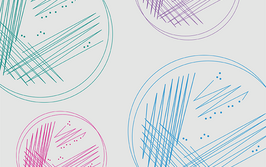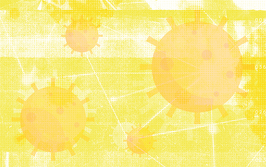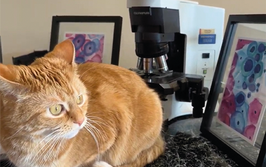
A Renal Failure
Current acute kidney injury (AKI) tests are not sufficiently rapid and can even be misleading. Can two new biomarker assays offer a superior alternative?
At a Glance
- Acute kidney injury (AKI) affects over 10 percent of all patients in hospital, and more than half of the patient population in intensive care – but many cases are potentially preventable
- Current tests are limited in their ability to quickly and accurately diagnose AKI, which means that AKI can progress to more severe disease before it is recognized
- New biomarker assays, including cell cycle arrest markers, have potential to improve the diagnosis and management of AKI
- Earlier recognition of AKI could result in improved patient outcomes, reduced costs, and more personalized healthcare
Acute kidney injury (AKI), formerly known as acute renal failure, is the term used to describe an acute deterioration of renal function that has been present for less than three months. It affects 10–15 percent of patients in hospital and up to 60 percent of patients in intensive care. Patients with pre-existing chronic kidney disease, heart failure and liver disease are particularly at risk. AKI has multiple etiologies but the most common causes are sepsis, hypovolemia and drug nephrotoxicity. The grades of severity range from early-stage AKI to complete loss of kidney function where renal replacement therapy is needed (see Figure 1). As a consultant in nephrology and critical care medicine, I take care of patients with AKI on a daily basis.
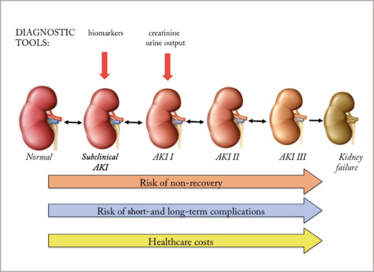
Figure 1. The role of biomarkers in AKI management.
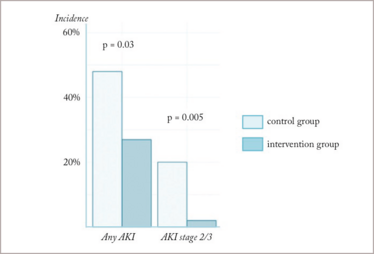
Figure 2. Biomarker-guided reduction of AKI after major surgery; adapted from (5).
Adding injury to insult
AKI can be challenging to spot – patients may present with no obvious signs or symptoms – but given that many episodes of AKI are preventable, it’s important to identify those people at risk and put measures in place to avoid drugs and procedures that harm kidney function.
In the UK, the National Institute for Health and Care Excellence (NICE) recommends assessing the risk of AKI in all patients before surgery or any other procedure that may cause AKI (for example, exposure to contrast agents). Following a potentially nephrotoxic insult, it is essential to check whether early AKI has occurred and to implement appropriate interventions to prevent further deterioration of renal function, if necessary.
Traditional tests to assess patients for risk of AKI include the measurement of serum creatinine and urine output. However, these tests are not kidney-specific and have serious shortcomings. The role of creatinine as a marker of renal function is limited by the fact that its half-life increases from four hours to 24–72 hours if glomerular filtration rate (GFR) decreases. As such, the serum concentration may take 24–36 hours to rise after a definite renal insult. Also, over 50 percent of renal function needs to be lost before serum creatinine levels rise.
Creatinine generation depends on liver and muscle function and, as a result, a true fall in GFR may not be adequately reflected by serum creatinine in patients with sepsis, liver disease or muscle wasting. Serum creatinine concentration is also affected by variations in volume status, which means that the diagnosis of AKI may be delayed or missed in patients with significant fluid overload. In addition, there is no standardized laboratory method for quantifying serum creatinine. Substances like bilirubin or drugs may interfere with certain analytical techniques, more commonly with Jaffe-based assays.
Finally, an important limitation of all creatinine-based definitions of AKI is that they require a reference value to describe “baseline” renal function. Ideally, this value should reflect the patient’s steady-state kidney function before the episode of AKI. However, information on pre-hospital kidney function is not always available. Various surrogate estimates are frequently used, but there is no shared approach of determining baseline renal function.
Urine output is another important clinical marker but, like creatinine, it is not kidney-specific. In fact, urine output may persist until renal function almost ceases. Similarly, oliguria may be an appropriate physiological response of functioning kidneys during periods of prolonged fasting, hypovolemia or following stress or pain. These limitations and shortcomings can easily lead to both a delay in diagnosis of AKI, and also erroneous diagnosis of AKI, depending on the patient.
The need for a new approach
Patients with AKI have a high risk of short- and long-term complications, including mortality – especially in severe cases. The length of the stay in hospital is often prolonged, which contributes to a significant increase in healthcare costs. In 2014, the annual cost of AKI related to inpatient care alone in England was estimated at £1.02 billion, just over 1 percent of the National Health Service budget. The additional lifetime cost of post-discharge care for people who had AKI during hospital admission in 2010-11 was estimated at £179 million (1).
There is increasing recognition by patient groups, health care providers and administrators that AKI is also associated with long-term complications after discharge from hospital. Survivors have a higher risk of developing chronic kidney disease (including dialysis-dependent renal failure), cardiovascular morbidity (including myocardial infarctions and strokes), a higher risk of fractures, and are more susceptible to infections. They also often need prolonged and recurrent hospitalizations. The risk of developing both short- and long-term complications increases with AKI severity (see Figure 1).
An arresting discovery
In addition to my clinical role, I spend a lot of time teaching and training colleagues, including medical students, doctors and nursing staff. I lead an AKI improvement group that aims to improve the diagnosis and management of AKI across all specialties through the introduction of AKI champions and the implementation of AKI care bundles.
In the pursuit of new biomarkers for AKI, I was the principal investigator of the Sapphire study that validated the role of two cell cycle arrest markers in critically ill patients – urine insulin-like growth factor-binding protein 7 (IGFBP7) and tissue inhibitor of metalloproteinases-2 (TIMP-2) (2). The study showed that urinary TIMP-2 and IGFBP7 predicted the development of stage 2–3 AKI within 12 hours and before a detectable rise in serum creatinine. In combination, the two markers performed much better than other biomarker tests. The availability of these new markers has allowed the identification of patients with evidence of kidney injury before a significant change in serum creatinine occurs – “subclinical AKI.”
Defining Neonatal AKI
Diagnosing acute kidney injury (AKI) is often a challenge in adult patients – but what extra problems does it pose in premature and term newborns? Here, Patricio Ray, a nephrologist with the Children’s National Health System and the George Washington University School of Medicine, USA, shares his efforts towards a more standardized approach to kidney injury in infants.
What’s wrong with the current definition of neonatal AKI?
Current definitions are not sensitive enough to identify newborns undergoing the early stages of AKI during the first week of life. For example, different studies estimating the percentage of infants in neonatal intensive care units (NICU) with AKI range from 8 percent to 40 percent, depending on which definition is used.
Why is diagnosing AKI in infants such a challenge?
AKI is diagnosed based on the identification of an acute decline in the glomerular filtration rate (GFR), which is estimated indirectly in clinical practice by assessing changes in serum creatinine (SCr) levels. Creatinine is a protein that is produced by the muscle and is filtered by the kidney. Other methods to estimate the GFR of newborns are difficult to implement in clinical practice. Most neonatal AKI studies prior to 2005 used an arbitrary definition of AKI, including a SCr value ≥ 1.5 mg/dL. In 2012, a new definition of neonatal AKI was implemented based on the Kidney Disease Improving Global Outcomes (KDIGO) definition. These guidelines defined the early stages of AKI (stage 1) based on the rise in the SCr values (≥ 0.3 mg/dL within a 48 hour period), and a decreased urine output (< 0.5 mL/kg/hr for six to 12 hours). These definitions, however, fall short because the SCr levels during the first days of life reflect the maternal SCr values, and the urine output is less reliable in newborns. Therefore, these definitions are not sensitive enough to identify the early stages of AKI during the first week of life. In 2013, the National Institute of Diabetes and Digestive and Kidney Diseases, part of the National Institutes of Health, recognized the limitations of the standard AKI definitions and convened a meeting of neonatologists and nephrologists to discuss this issue.
Could you describe your new approach to diagnosing AKI in neonates?
Our research is focused on developing new biomarkers to identify the early stages of AKI in critically ill neonates during their first days of life. This is a critical period of life in which the kidney is maturing and all nephrotoxic stimuli should be minimized. Our new approach consists of following the rate of SCr decline, rather than waiting for the SCr levels to rise to > 0.3 mg/dL within 48 hours. Our approach is based on the following observations:
- The first-day SCr levels reflect the maternal SCr values and can’t be used to estimate the GFR of newborns
- A newborn kidney that is functioning properly should “clear” the residual SCr levels transferred from the mother through the placenta in a timely manner
- By looking at how quickly neonates clear their first day SCr levels, we could predict how well their kidneys are working
A term newborn born with a first day SCr level ≥ 0.8 mg/dL who is at high risk of developing AKI or needs nephrotoxic antibiotics to treat or prevent an infection is an ideal candidate for our test. We are currently assessing the normal rate of SCr decline for preterm infants, in particular those under 34 weeks of gestational age. The SCr decline is not useful once the neonates reach their normal SCr levels during the first week of life, or in very low birth weight infants under 30 weeks of gestational age, in whom the SCr levels do not decline significantly during their first week of life.
What still needs to be done to fully validate this test and bring it into clinical use?
Laboratories should develop their own normal SCr decline curves, taking into consideration the methods used to measure the SCr, gestational age, and the standard error of these measurements. As well as AKI, the test is able to identify all neonates with impaired renal function, acute or chronic, during the first week of life. The test could potentially be used in all NICUs supported by laboratories that measure SCr levels in a reliable manner to identify and manage term and near-term infants with impaired renal function – and could potentially improve clinical outcomes.
During critical illness in particular, patients are exposed to a large number of insults that are potentially harmful to renal function, often simultaneously or in succession. Recently, we showed that urinary cell cycle arrest markers exhibited a characteristic rise and fall in patients who were exposed to a potentially nephrotoxic drug and subsequently developed moderate to severe AKI (3). In patients who did not develop AKI, there was no significant biomarker rise. Importantly, during the early hours after an exposure to a renal insult, when urinary cell cycle arrest markers increased, serum creatinine levels did not change. These results are particularly relevant to clinicians and pharmacists who are often on the front lines when it comes to AKI and have the greatest need for information concerning the interpretation of these biomarkers.
Tests that allow earlier diagnosis of AKI provide an opportunity to intervene earlier and have great potential to improve the short and long-term prognosis (see Figure 1). Prevention of severe AKI is associated with a shorter stay in hospital, a reduced risk of needing renal replacement therapy or treatment in the intensive care unit, and a decreased risk of developing chronic kidney disease, including end-stage renal failure. Prevention of severe AKI also reduces the number of nephrology consults and avoids the need for investigations that are typically ordered for patients with AKI, including scans and renal biopsies.
Moreover, adequate identification of patients who are at risk of or have developed subclinical AKI presents an opportunity to prevent the injury and its sequelae by influencing decision-making and clinical management. For instance, we can avoid antibiotics and other potentially nephrotoxic exposures, including contrast administration, if we know that a patient has a particularly high risk of AKI. It may also determine where the patient will be managed in hospital; for instance, a high-dependency unit rather than a general ward.
Improving and preventing disease
Ivan Göcze and Alexander Zarbock have clearly demonstrated that biomarker-based identification of high-risk patients and early implementation of an AKI care bundle can prevent the development of AKI and reduce AKI severity in patients after surgery (4)(5) (see Figure 2). Göcze also reported a reduced length of stay in hospital with associated cost savings (5). The results are impressive, and good news for patients and healthcare providers.
In short, delays in recognizing AKI are associated with increased risks for the patient, and increased costs for the healthcare provider. Amid the increasing need for personalized medicine in which care is directly influenced by the risk profile and phenotype of the individual patient, improved testing for AKI represents a real opportunity to better tailor treatment.
Marlies Ostermann is a Consultant in Critical Care and Nephrology at Guy’s and St Thomas’ Foundation Trust, London, and Honorary Senior Lecturer at King’s College London, UK.
An AKI Alert
Computerized clinical decision support steps in to help prevent AKI
The problem
AKI is a serious and surprisingly common issue among hospitalized patients. The kidney filters toxins out of the blood, so infections, trauma, and major surgery – all of which release toxins into the bloodstream – run a high risk of damaging the kidneys. Not all potentially harmful toxins come from adverse events; the radiocontrast agents and drugs doctors use to help heal their patients also contribute to this injury. And, of course, age and chronic diseases (including kidney disease) are significant risk factors for acute kidney injury, and hospitalized patients are getting older and sicker.
Our solution
It was out of a desire to help those patients at risk of AKI that my colleagues and I developed a new decision support tool (6) – a relatively straightforward program that is built directly into the inpatient electronic medical record (eMR) system we use. The program finds all the previous serum creatinine values in a patient’s record and analyzes them to establish a baseline. Then, it monitors subsequent creatinine results for any change and alerts clinicians to “possible AKI.” It also offers additional support; if a physician clicks on the “possible AKI” alert, they receive information on the reference creatinine level, the stage of disease, and a prompt for further consultation (including the pager numbers of the relevant departments, such as renal medicine or intensive care).
We tested our new tool in over half a million patients – and those with AKI did very well. The mortality rate decreased significantly, from 10.2 to 9.4 percent, and the length of the average hospital stay went from 9.3 to 9.0 days (also a significant change). And despite an increase in diagnosed cases of both AKI and chronic kidney disease, dialysis rates for AKI decreased from 6.7 to 4.0 percent. We also observed less need for nephrology and critical care consults. Overall, not only were patients in better health, but they also required fewer hospital resources for successful recovery.
Could other hospitals do the same? Yes – and without difficulty. Once we had established the program, it was easy to implement across our system because we have a single eMR throughout. We are, of course, still constantly refining it, so I expect it will evolve over time. My colleagues and I see it as a platform to which we can always add extra features in line with new ideas and recommendations. It’s not set in stone, and it’s not exclusive to our hospital – like any change, it merely calls for the will and persistence of those involved in pursuing change.
John Kellum is Director of the Center for Critical Care Nephrology, CRISMA Center, and of the Center for Assistance in Research using eRecord, as well as Professor and Vice Chair for Research in the Department of Critical Care Medicine at the University of Pittsburgh, USA.
- M Kerr et al., “The economic impact of acute kidney injury in England”, Neprhol Dial Transplant, 29, 1362–1368 (2014). PMID: 24753459.
- K Kashani et al., “Discovery and validation of cell cycle arrest biomarkers in human acute kidney injury”, Crit Care, 17, R25 (2013). PMID: 23388612.
- M Ostermann et al., “Kinetics of urinary cell cycle arrest markers for acute kidney injury following exposure to potential renal insults”, Crit Care Med, in press (2017).
- M Meersch et al., “Prevention of cardiac surgery-associated AKI by implementing the KDIGO guidelines in high risk patients identified by biomarkers: the PrevAKI randomized controlled trial”, Intensive Care Med, 43, 1551–1561 (2017). PMID: 28110412.
- I Göcze et al., “Biomarker-guided intervention to prevent acute kidney injury after major surgery: The prospective randomized BigpAKstudy”, Ann Surg, [Epub ahead of print] (2017). PMID: 28857811.
- M Al-Jaghbeer et al., “Clinical decision support for in-hospital AKI”, J Am Soc Nephrol, [Epub ahead of print] (2017). PMID: 29097621.
Marlies Ostermann is a Consultant in Critical Care and Nephrology at Guy’s and St Thomas’ Foundation Trust, London, and Honorary Senior Lecturer at King’s College London, UK.



